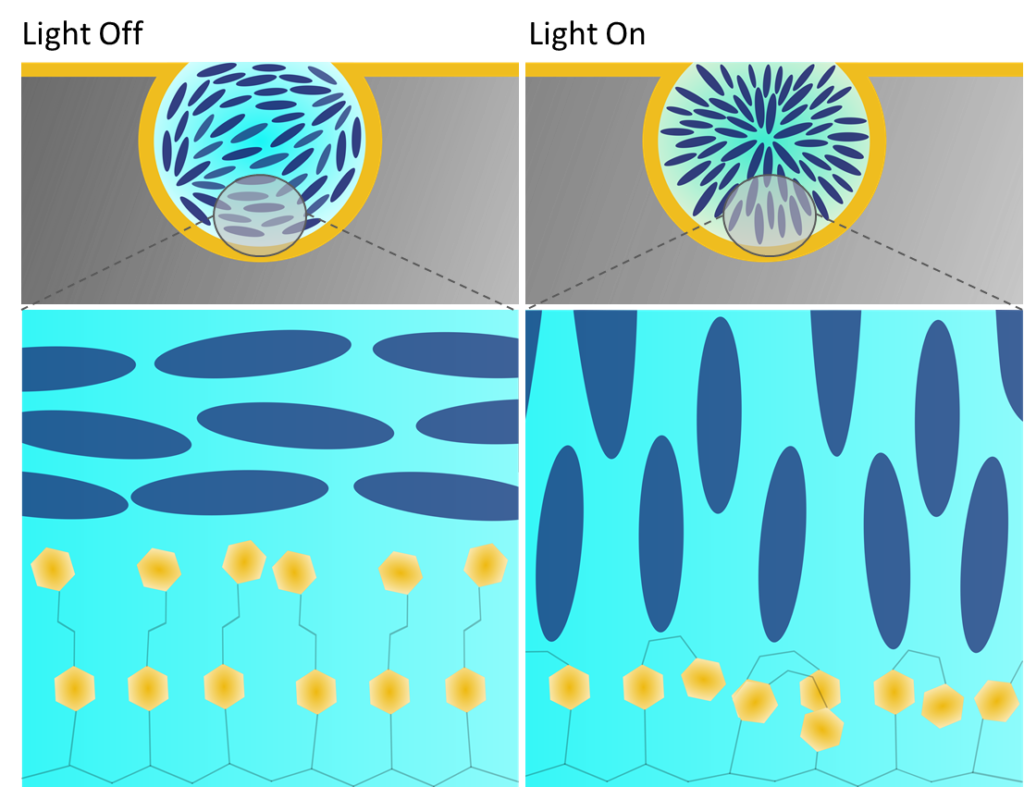Liquid crystals flow like a liquid, but its molecule arrangement resemble solids. What makes them really interesting is the possibility to reorder molecules easily. Smart windows are made of these pseudo crystals mixed in polymers. These change from transparent to opaque at the flick of a switch when the crystals reorient. Is electricity the only way to make them reorient? No. Light can flip liquid crystals as well.
Making liquid crystals respond to light
Azobenzene is an isomer. Think of isomers as Transformers of the materials world. Optimus Prime looks different when it transforms from a truck to a robot. But deep down, the physical properties of the materials remain the same. When light strikes azobenzene, it reorders its atoms and molecules. When the light stops, it returns to its original state. So, to make a surface light sensitive, all we need to do is make azobenzene a part of it. As azobenzene adjusts its structure, it will pull or press against the surface and materials it is close to.
Researchers from Nagoya University, Tohoku University, and Rikkyo University used this logic to create a liquid crystal reorienting surface. They put the material onto a porous surface coated with azobenzene. Using Polarized Optical Microscopy, they saw the liquid crystals flipping as light struck. The process was pretty fast too, with the switching happening in seconds.

Why porous surfaces are key
A smooth surface coated with azobenzene can also flip liquid crystals. However, the team found that these were not efficient. It took 10 times longer to flip crystals on a flat surface! Normally, a microporous surface is a red flag. Making a surface with uniform micropores is technically difficult and expensive. Fortunately, the ‘breath figure’ method used in this study is not.
Practical applications
The idea of flipping liquid crystals with light has been around for over a decade. Many consider it promising for applications in telecommunication and photonics. It may also play a role in making truly smart windows. With azobenzene, liquid crystals can reorient based on outside weather. This will ensure the building interior is comfortable without any electrical power whatsoever.
